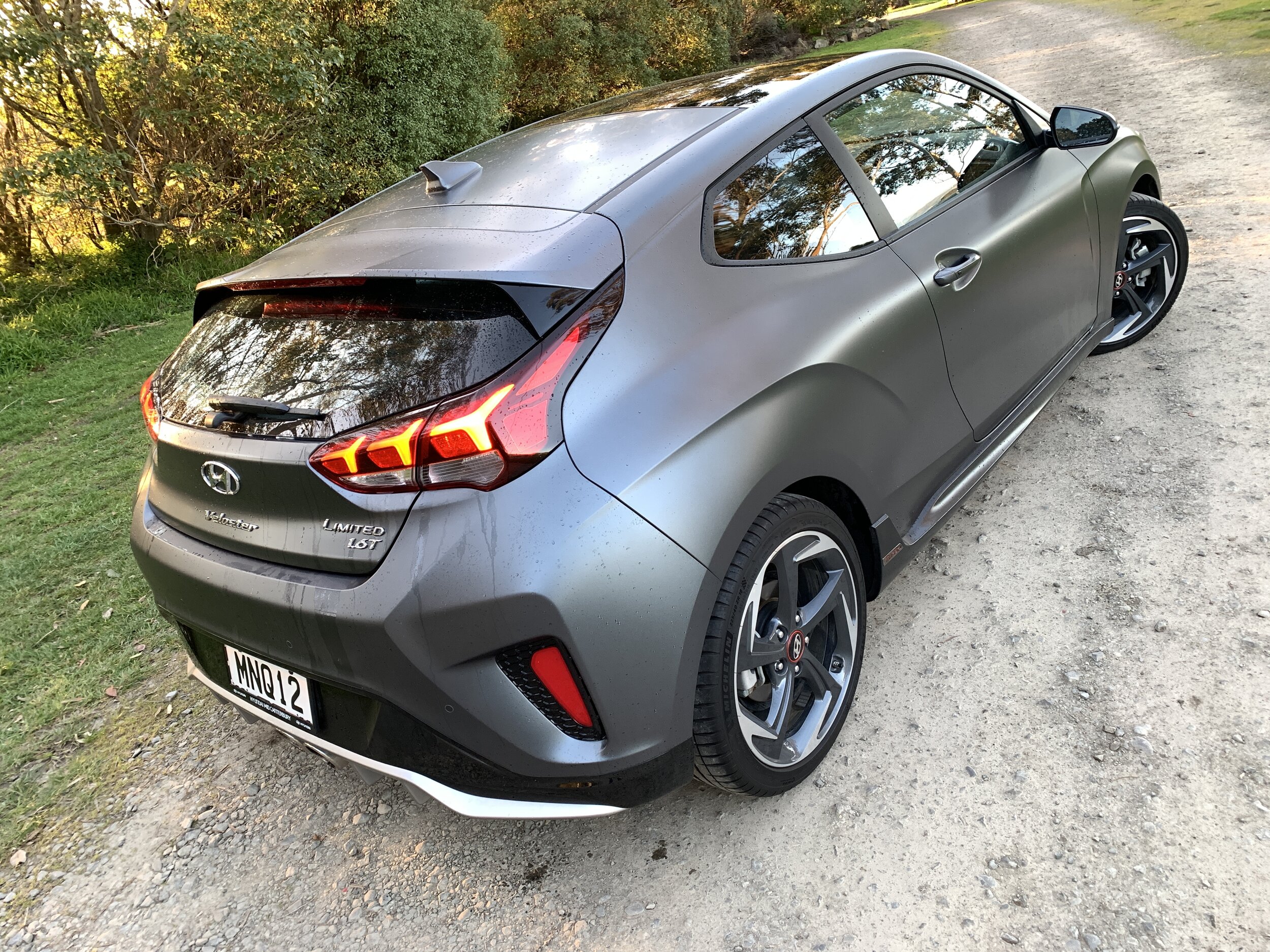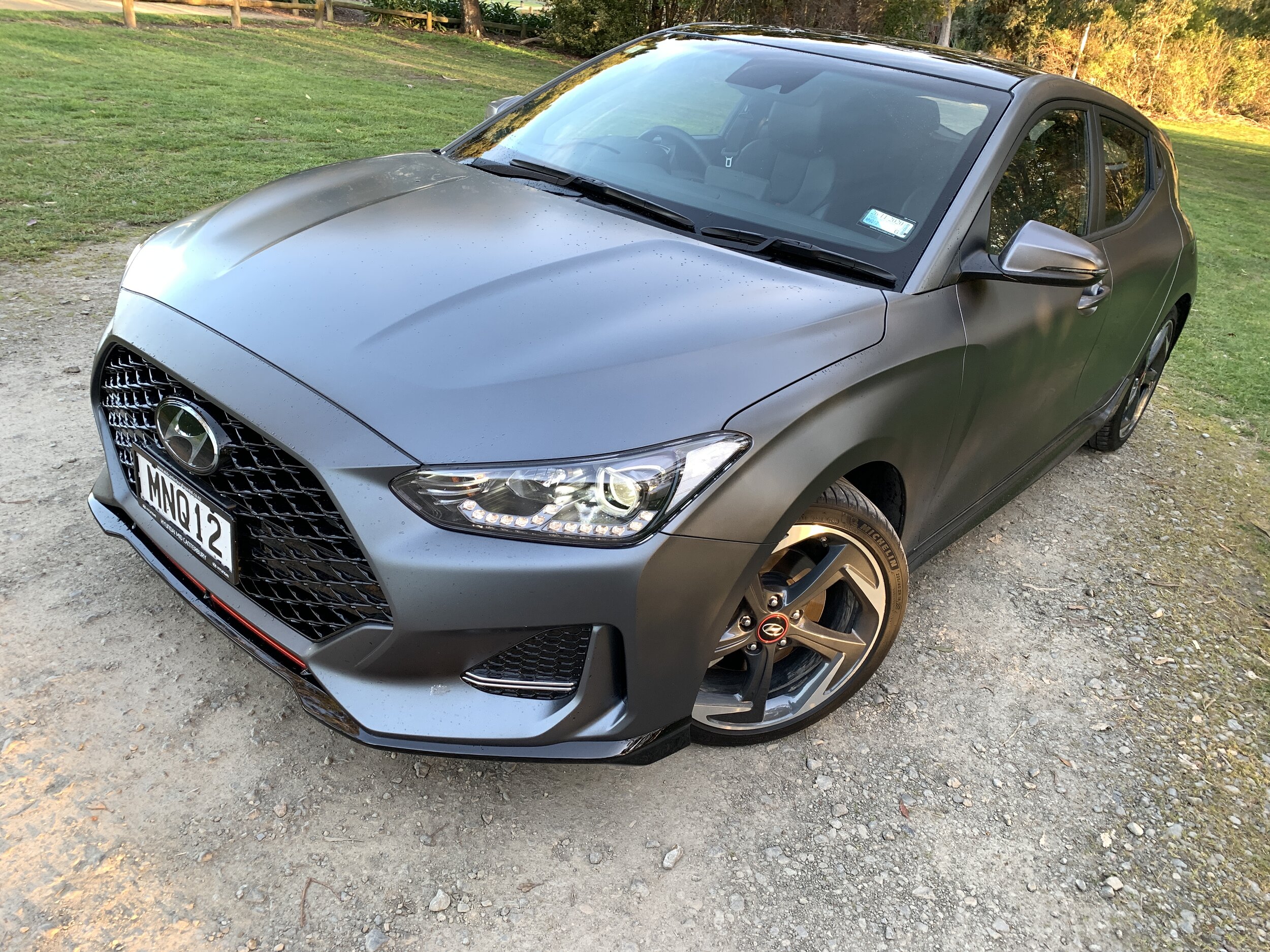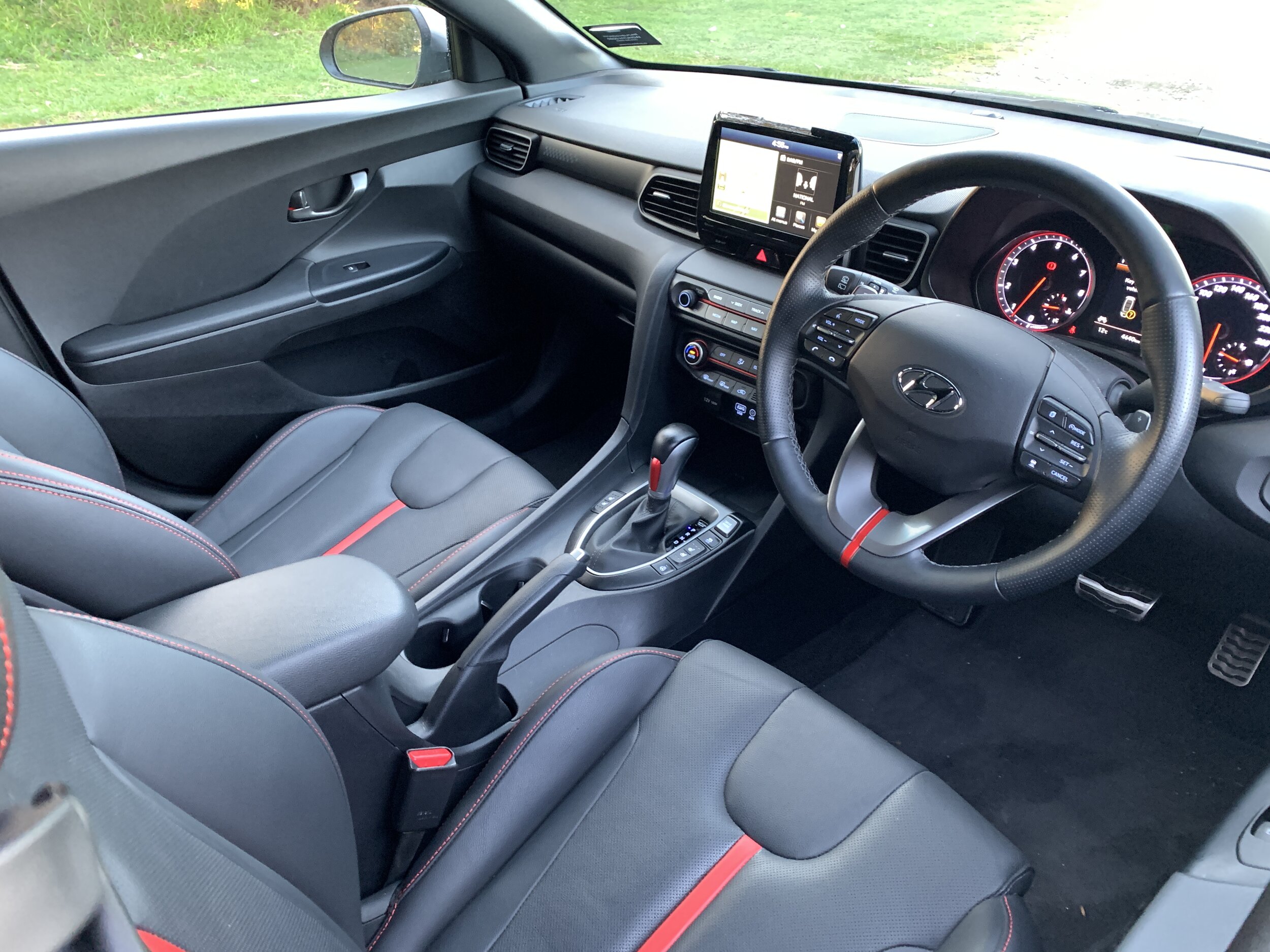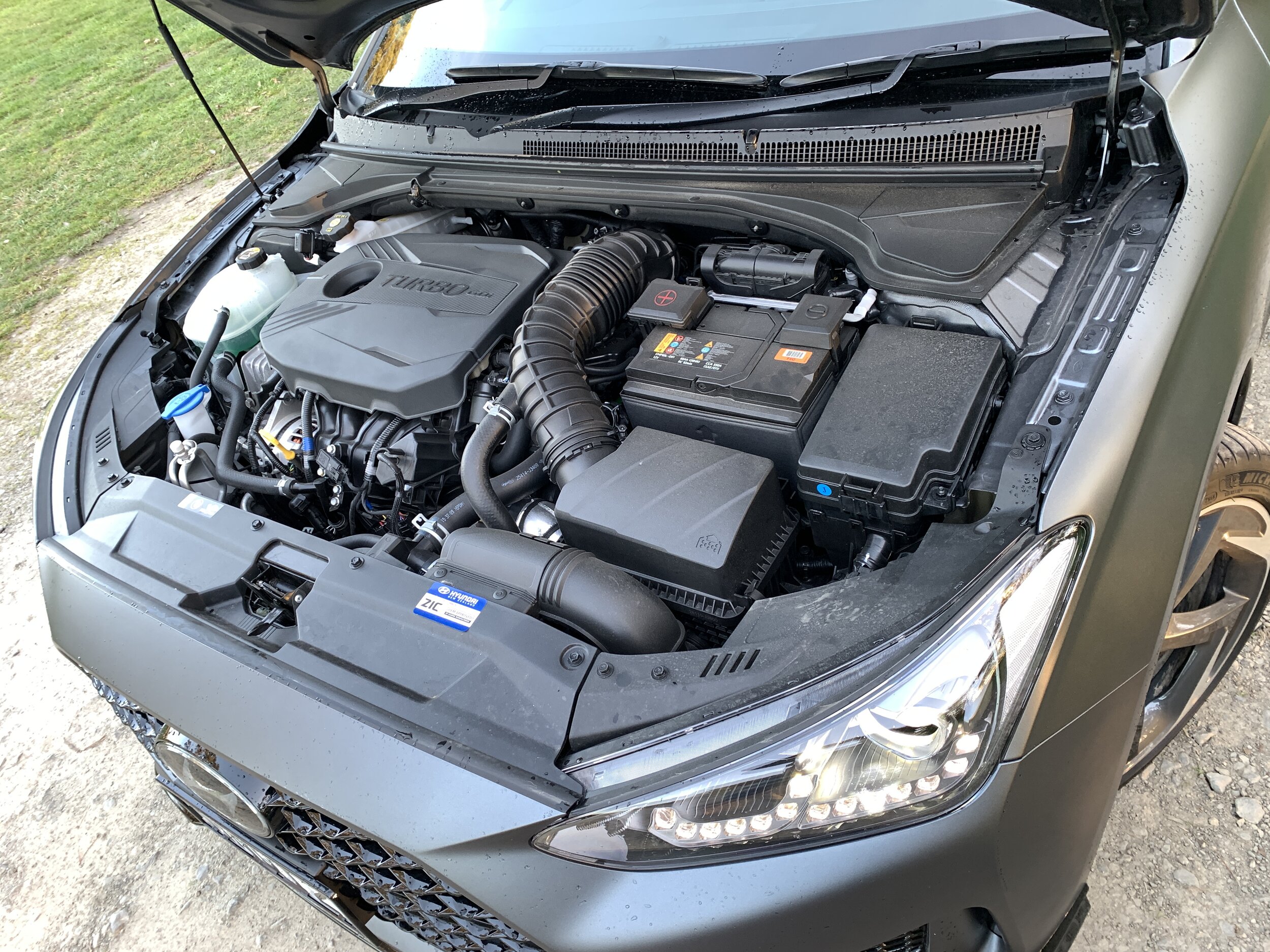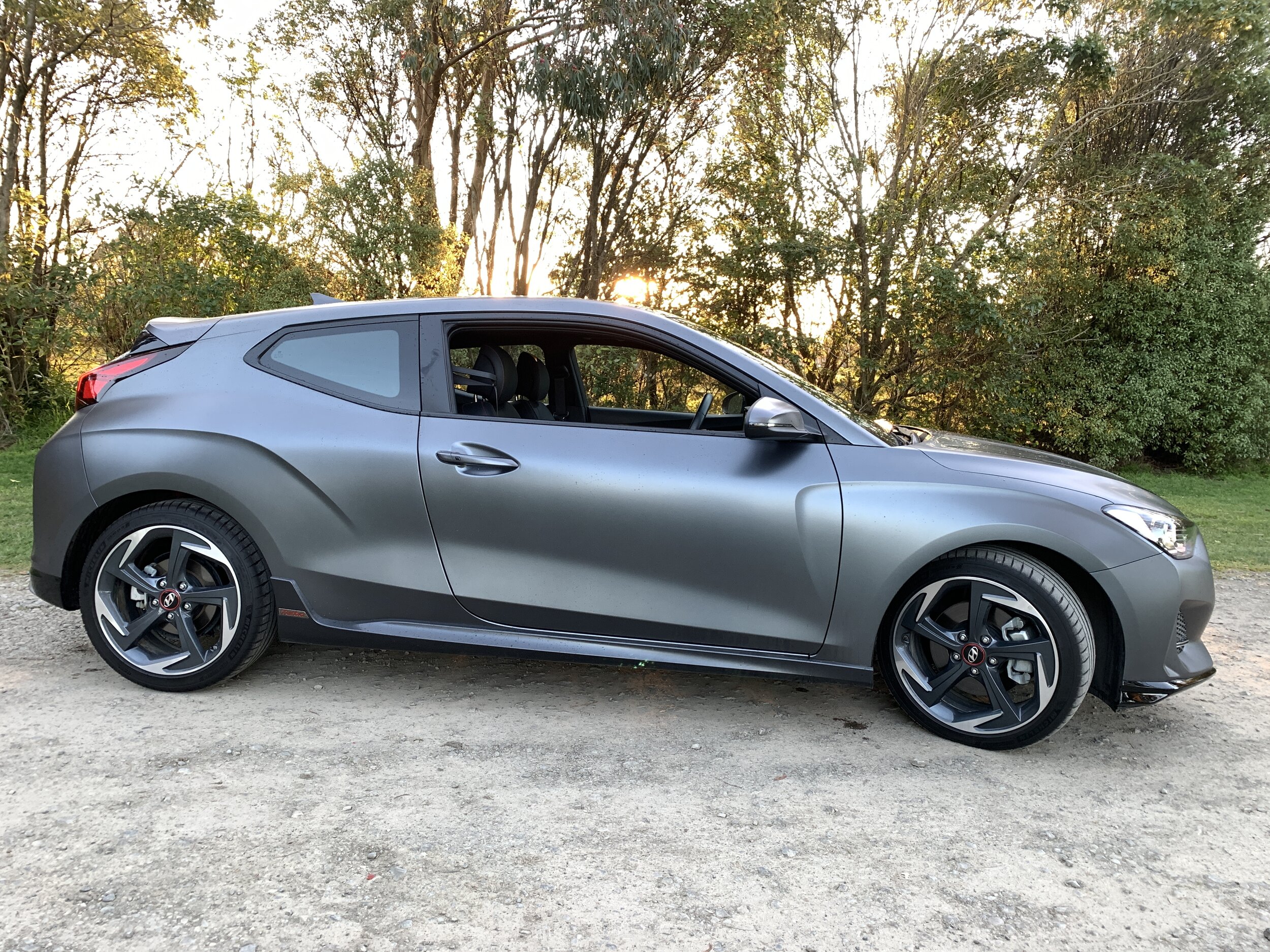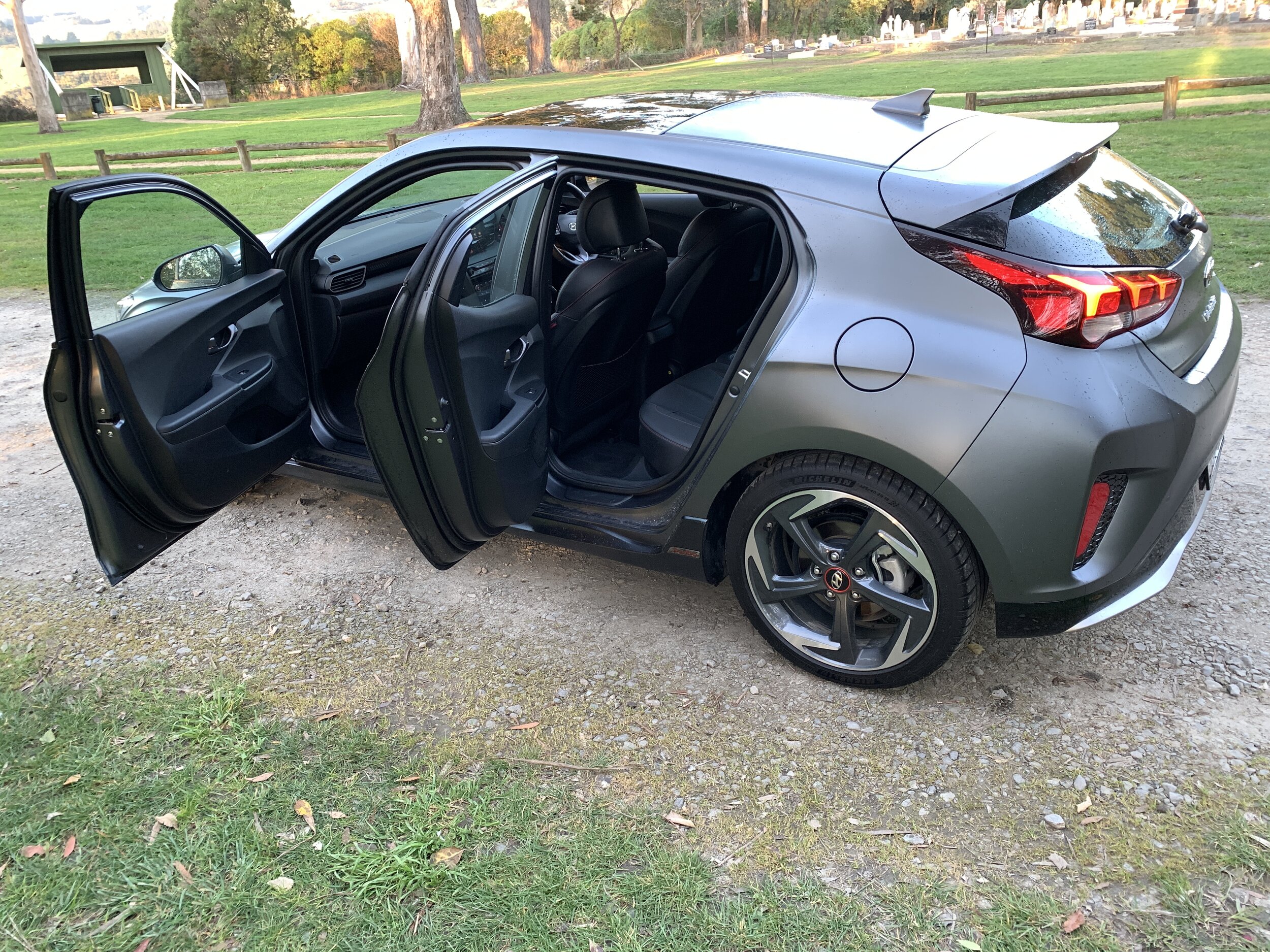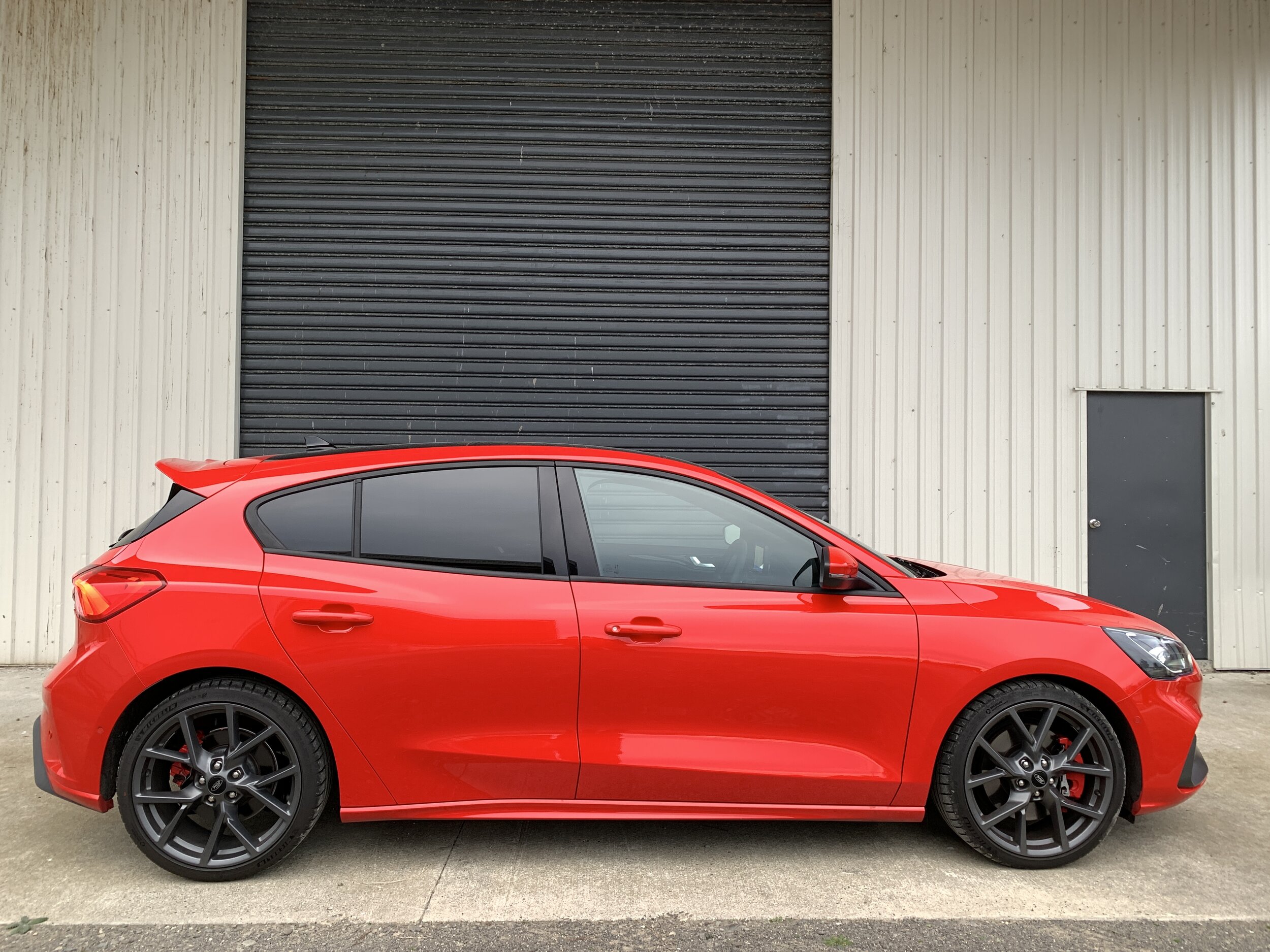Stinging mettle – so, you're looking for a performance hatch
/In alphabetical order, here they are – the Abarth 595 Competizione, AMG 45 S and the Ford Focus ST. Oh, and just for good measure, a surprise mystery guest.
ON the right roads, in the right conditions, there’s nothing to touch a compact car packing a big punch – so here’s a big ‘yeah boi’ for that fantastic creation, the hot hatch.
Here’s an acknowledgement, too, of how far that formula has gone. The four cars on test today very much remind just how elastic the genre has become.
Today’s ilk present across a span of abilities, from instruments of cost-effective fun to full-out, spend up large small-sized supercar slayers.
The common connect? Easy. All aim, of course, to deliver the base attraction of being driver’s cars of pedigree performance purity. Compelling zest, eye-popping pace, keen handling and an easily exploitable chassis … often, too, an ability to provide the most amount of laughs for the smallest amount of money. It’s right here.
Hot hatches – a category anything packing a tailgate of some kind fits into, even when the body stylings otherwise diverge – have been in our blood for 40 years now, but that’s not to say they’re here to stay. At least, not in the banging and burbling format we’ve got to know so well.
In case you still didn’t know, purely fossil fuel-reliant engines are on the way out. Cold hard fact, in the distant future, the hot hatch will follow every other passenger vehicle in having to ultimately abdicate its internal combustion engine entirely in favour of being completely electric.
Stricter emissions standards are already increasingly putting pressure on car makers to reduce their average CO2 emissions across their fleet of models or face hefty financial penalties; which puts pressure on low-volume but high CO2 producing cars like hot hatches.
That’s why Ford cancelled plans for the next-generation Focus RS, why Peugeot, which has a long and illustrious hot hatch legacy, has reportedly added electric impetus into the formula for it next 208 GTi and why Volkswagen, arguably the inventors of the hot hatch with the 1975 Golf GTI, has committed to battery-assisted impetus for all almost all its performance fare. The new GTi coming next year will be spared, but anything from now on with an ‘R’ badge won’t.
So, if you’re convinced petrol purity is an essential element of this concept, it’s potentially time to act fast. If you’re out to ‘get ‘em while they’re hot’, the following should all be considered.
ABARTH 595 COMPETIZIONE
Base price: $42,490
Powertrain and economy: 1.4-litre turbo-petrol four-cylinder, 132kW/250Nm, 5-speed automated single-clutch transmission, FWD, combined economy 5.8L/100km, CO2 133g/km.
Vital statistics: 3657mm long, 1627mm wide, 1485mm high, 2300mm wheelbase, luggage capacity185 litres, 17-inch alloy wheels.
For: Giant-killing spirit, design’s longevity, sounds fantastic.
Against: A touch too mad to be a daily driver, that gearbox!
BACK in 2007 I had the amazing good fortune to travel to Italy to drive the hot Ferrari of the moment, the 430 Scuderia.
In addition to that Michael Schumacher-tweaked model, we also had opportunity to drive a Fiat that, while highly familiar in teensy ambience and look, was then so new to the scene it was still months from being exported, let alone being built in right-hand drive.
The ‘Scud’ was a fab but fleeting thing; a treasured veteran now, so increased in value most are no longer driven.
The Fiat 500, on the other hand, has kept going … and going … and going. Thirteen years is sometimes two complete production cycles these days, yet the 500 endures. It’s more than just the life cycle; the design’s longevity is also something special. A very modest facelift in 2015 aside, it’s been completely unchanged.
The only version still around now is the 595 Competizione from Abarth, which has been spinning out heated versions of Fiat’s supermini since 2008.
Really, the 595 is a reheat. You might recall that the most bonkers limited-edition Abarth 500 ever was a limited count tribute car to Ferrari issued in 2012; the maddest, most extravagant version of this bad-ass baby ever.
Would we ever see the likes of it again? Yes. It’s this car. Okay, the 595 isn’t a complete reissue, but only in sense that there’s less carbon fibre and there are no Prancing Horse badges now.
But when it comes to the essentials and even some ingredients such as the steering wheel … well, I’d suggest there’d be an excellent chance of interchangeability. The turbocharged 1.4-litre powertrain, single clutch automated manual transmission, suspension, tyre type and wheel sizes are all as first rolled with that Fezza-aligned funster. Which, by the way, at $80,000 a pop, cost basically twice as much as a 595 does now.
At half the price, Italy’s smallest streel brawler obviously becomes a much better pitch against its most obvious competition - mainly the auto-only $39,740 Volkswagen Polo GTI and the manual-only $35,490 Ford Fiesta ST.
Well, in theory. In reality, it is a harder road to take. The Tom Thumb size, a transmission that’s the work of the Devil; the skateboard ride, Mack-like turning circle and dated ambience.
And yet, as an ultimate format of a car designed as 500s always were – as cheap, friendly choices for the cash-constrained masses. – it’s an impressive feat that, for all the annoyances and constraints, gets under your skin.
Race seats, a fat-rimmed, flat-bottomed steering wheel. alloy pedals, leather-trimmed shifter, a boost gauge cum shift light, plonked boy racer import car-style atop the dash, a back seat that’s more a low-set parcel shelf … all ludicrous, I know, but superb to see. Likewise the 17-inch alloys, fat sill extensions, twin exhausts and Brembo brakes with red calipers.
Even if anything fails to draw your eye, it’ll certainly turn your head on strength of sound. Of the cars gathered here, it was by far and away the loudest for exhaust note. And bravo to whoever tuned those twin pipes to deliver such a barking - dare I say Ferrari-esque – stridency.
Does it go? Does it heck, though everything tends to be brought down to scale. A 0-100kmh time of 7.4 seconds and top speed of 215kmh isn’t hugely hot, but when the setting sites just centimetres above the road and in a wee capsule everything is somewhat ‘amplified’. Karters know what I mean.
Somewhere between extra-nippy and surprisingly rapid, it’s certainly busy enough at 100kmh to warrant your full attention, the engine being spirited and rev hungry, especially in Sport. This activates the turbo’s overboost function and makes the exhaust note raspier and is, of course, mandatory, as driving it like a loon is operating at ‘Italian normal’.
That “Competizione MTA automated manual” delivers with four buttons: 1, N, R and A/M translating to ‘first’, ‘neutral’, ‘reverse’ and ‘auto/manual.’ You need to start out in first and then either allow it to self-shift through the forward gears or go into manual, which requires you to change up and down with paddle shifters.
Auto mode is the default but hardly good; the shifts tend to be lurchy and ill-timed. Manual is far sportier, snappier and much more in tune with the engine’s effervescence … once you learn that the path to smooth, slick upshifts is to snap off the throttle just at the point of upshift, then smack down on it again as the gear engages.
Basically, it’s a wild wee ride …that (and you knew this was coming) due to the wee wheelbase, light weight and limiting strut front, torsion beam rear suspension, feels that way, too. Jauntiness evident around town becomes the primary attribute that will make or break long-distance travel at open road speed.
The patron saint of tyres is a saving grace; it relies hugely on the 17-inch Michelin tyres providing plenty of sticky grip (they do). Also, you’ll find those brakes are much more than titillation and the go-kart-like direct steering means it points faithfully. Yet bumps that would be shrugged off by larger, heavier fare cause it to jump and crash about and it’ll accomplish hard cornering with untidy, inside rear wheel-lifting brio.
There’s nothing to suggest there’s a lack of sincerity in its engineering yet it’s also a car challenging you to accept that, in its world, things are different.
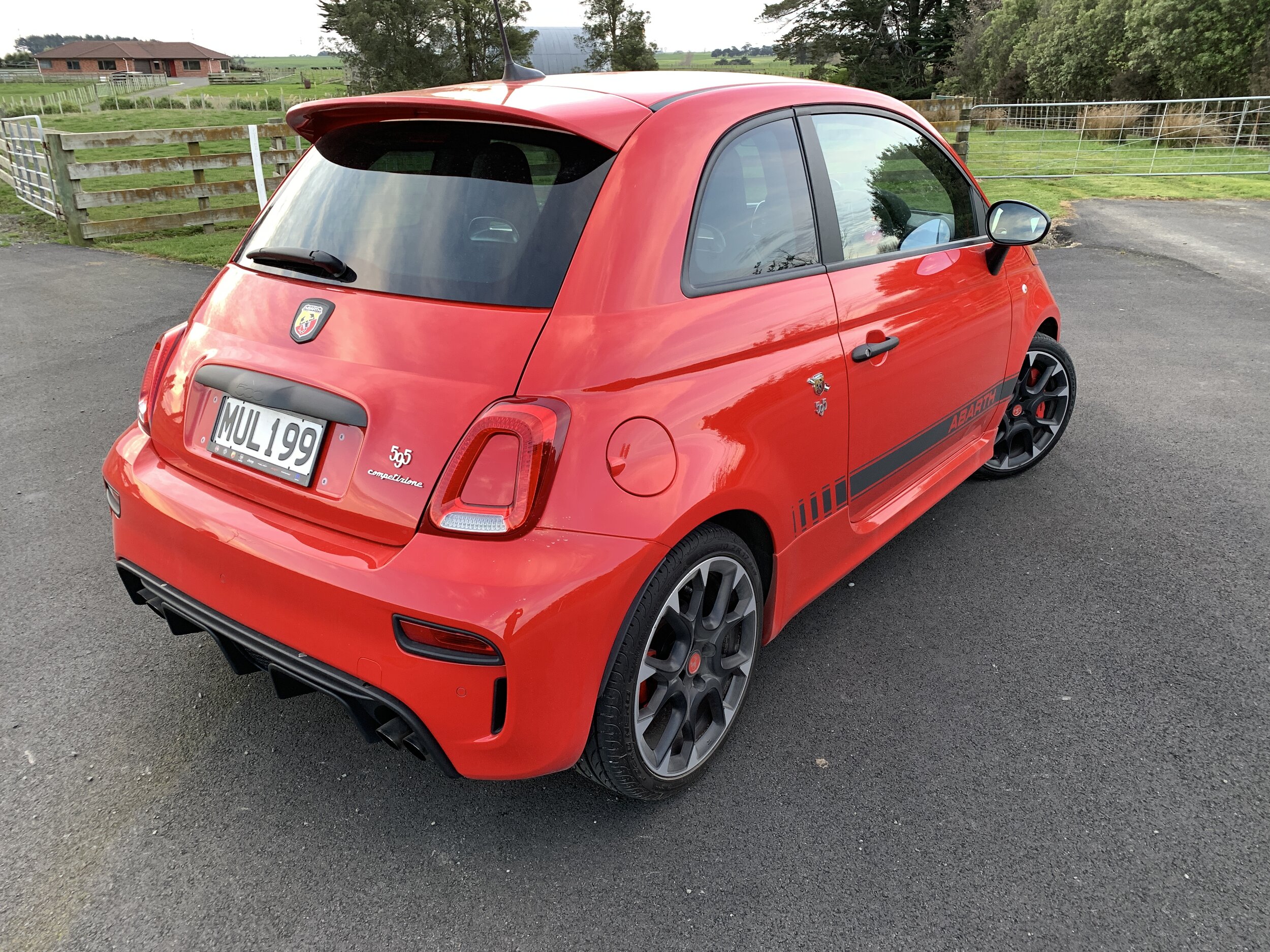
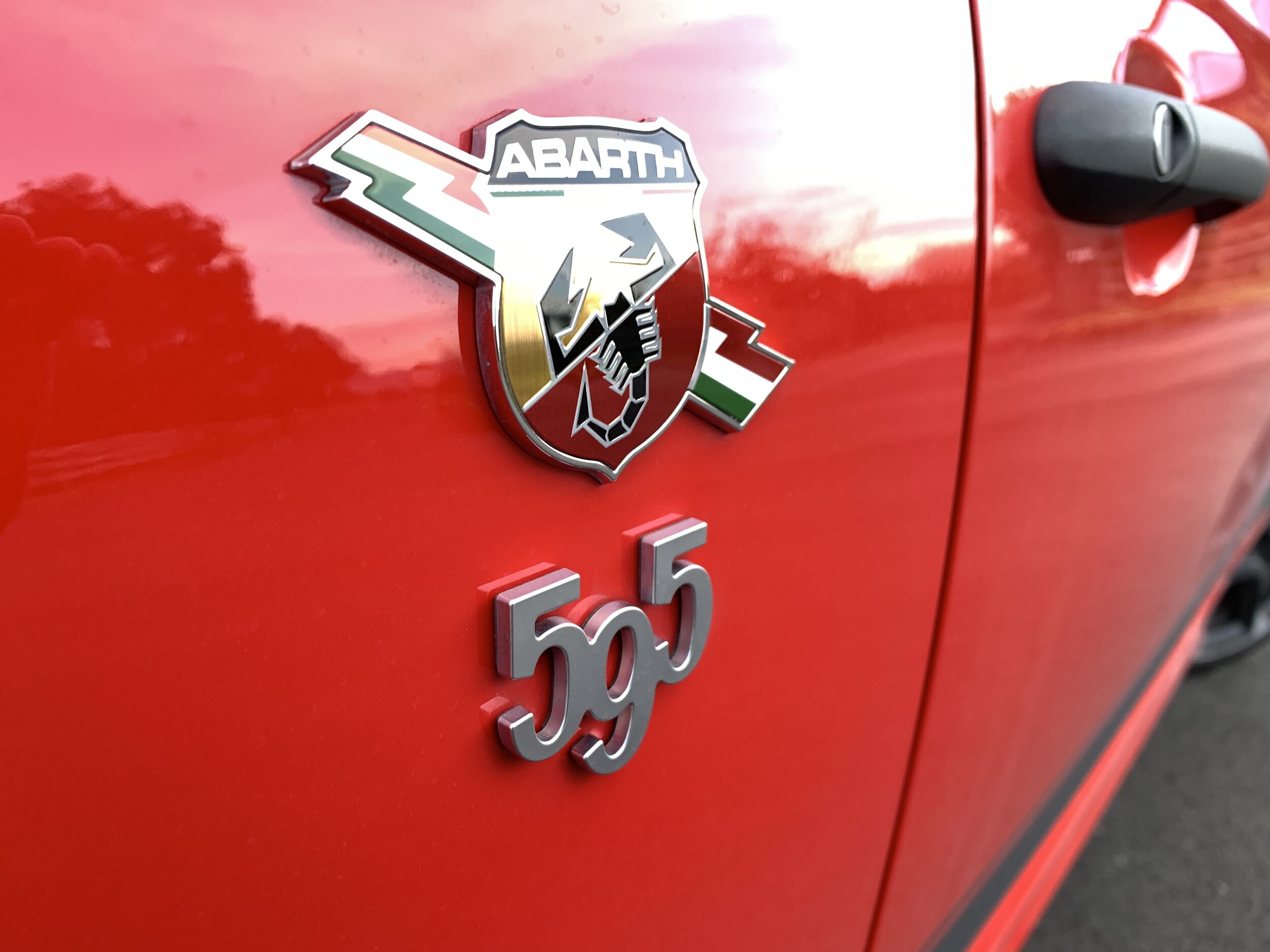
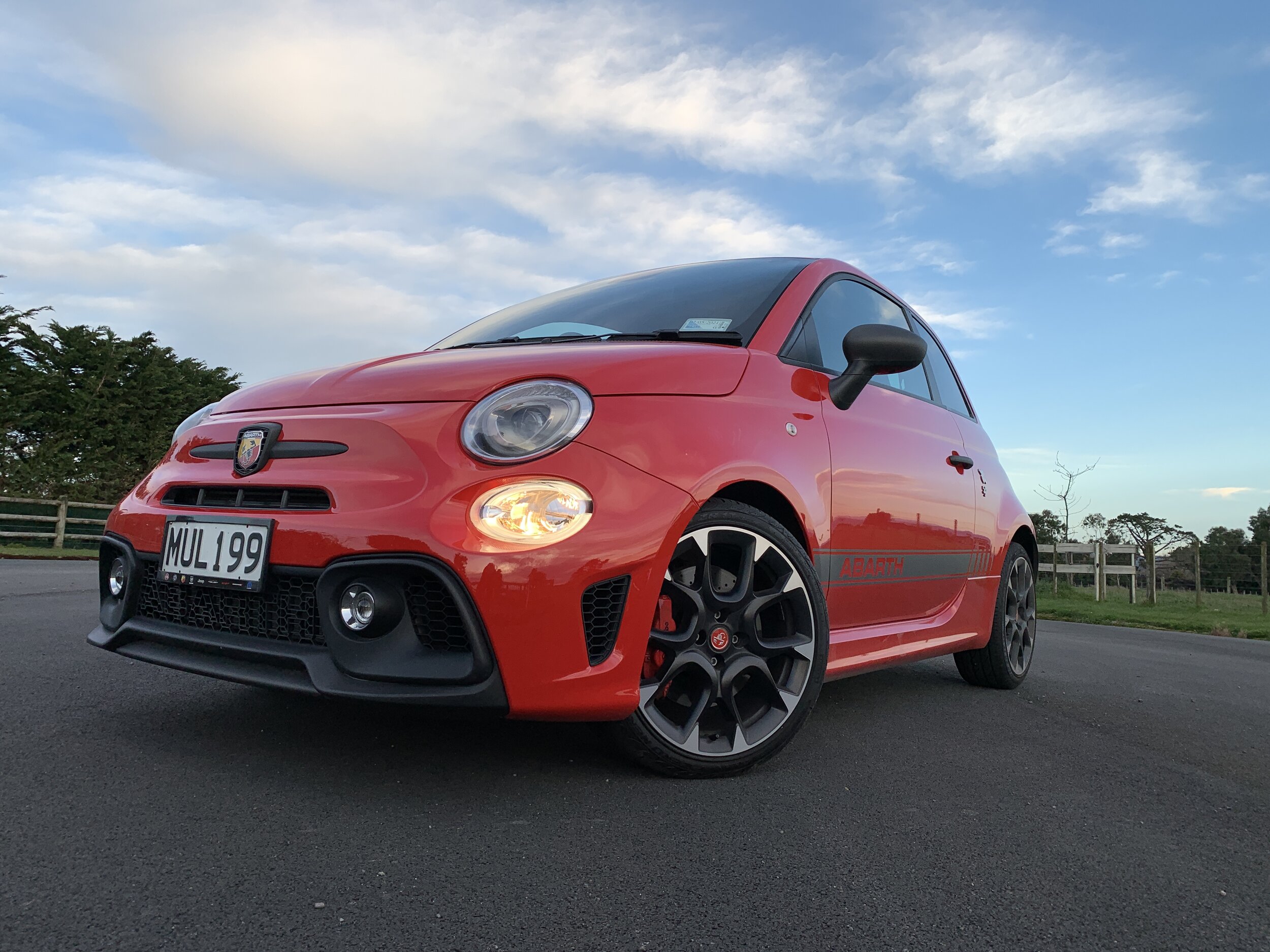
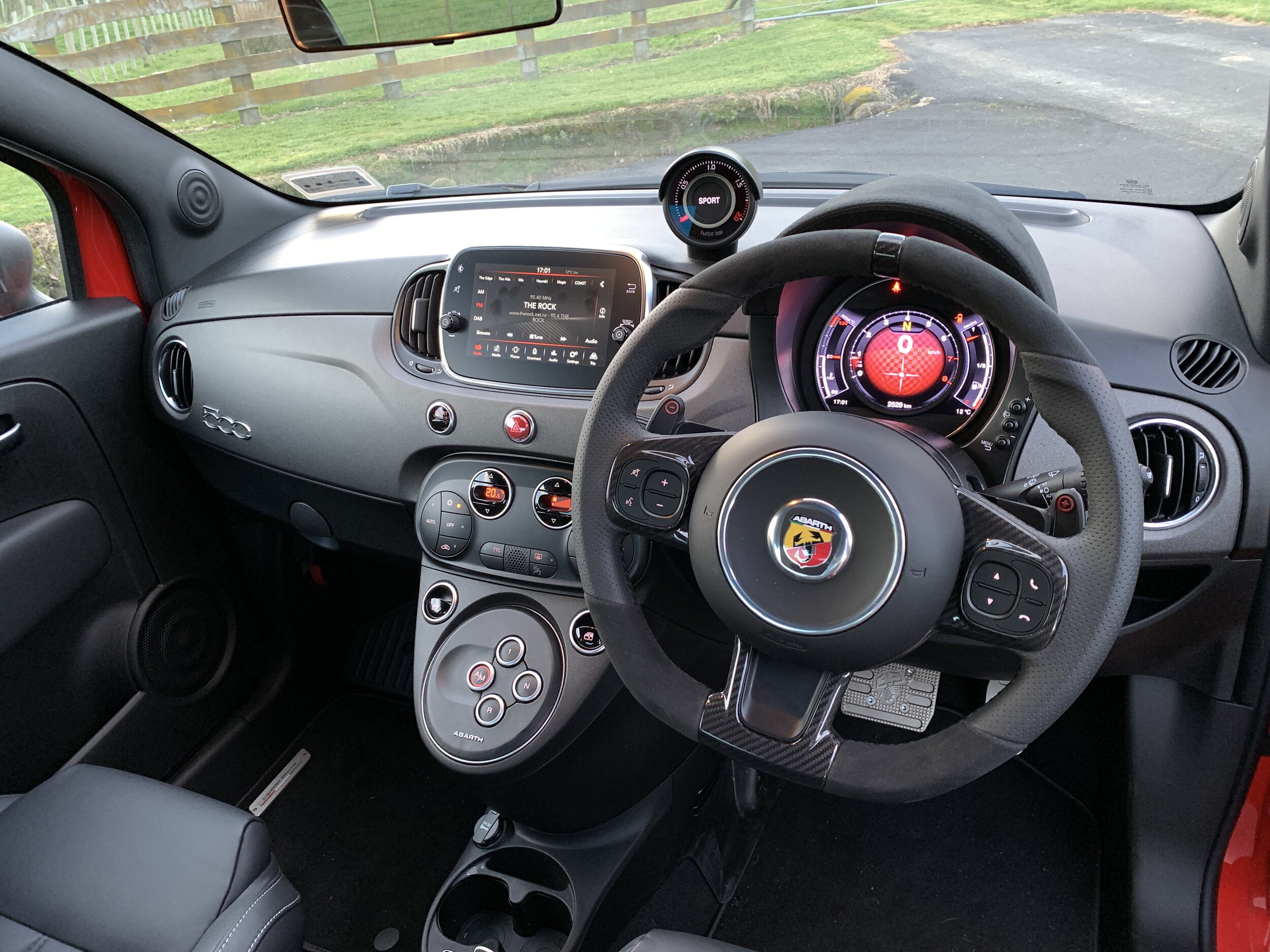
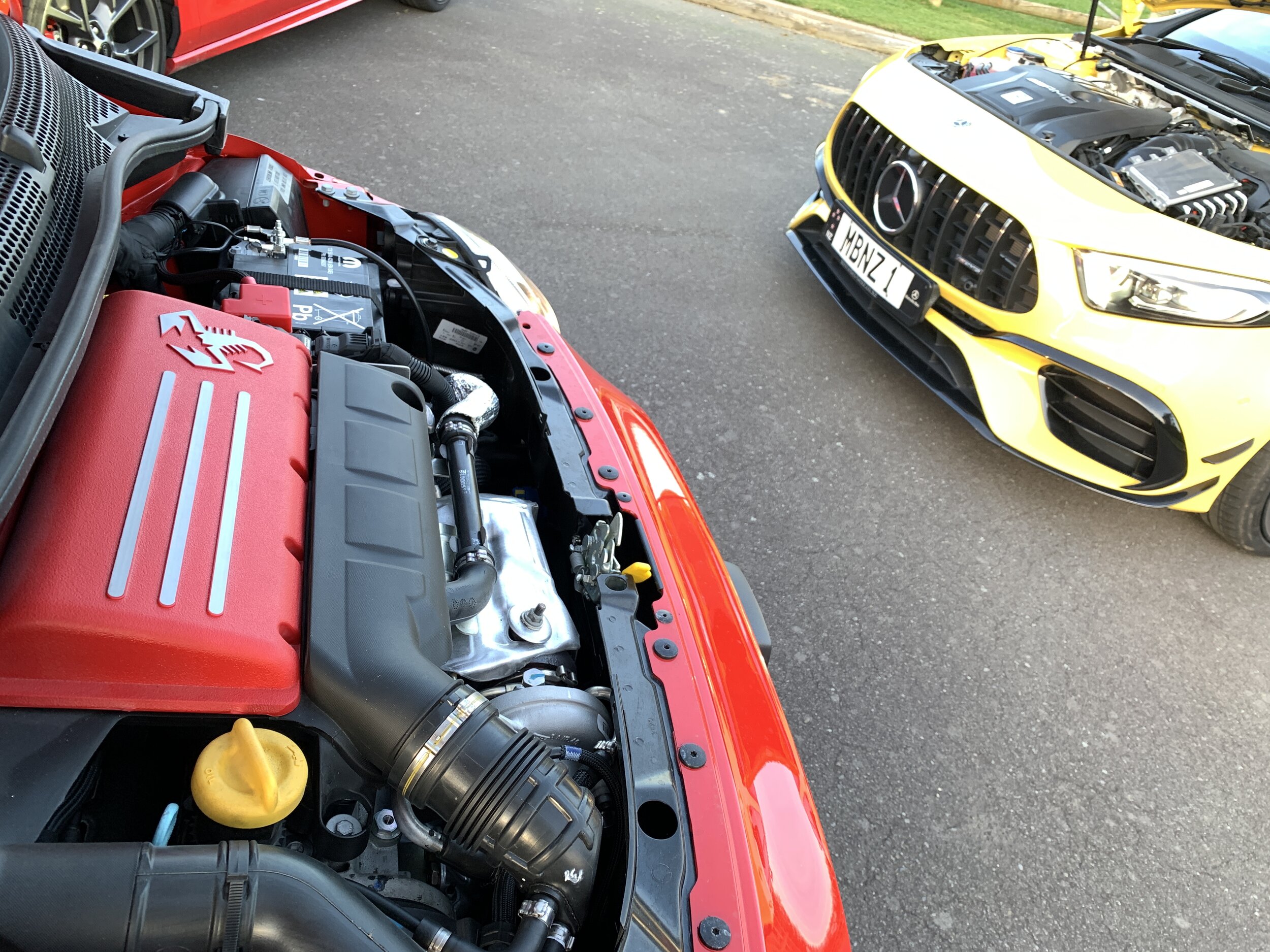
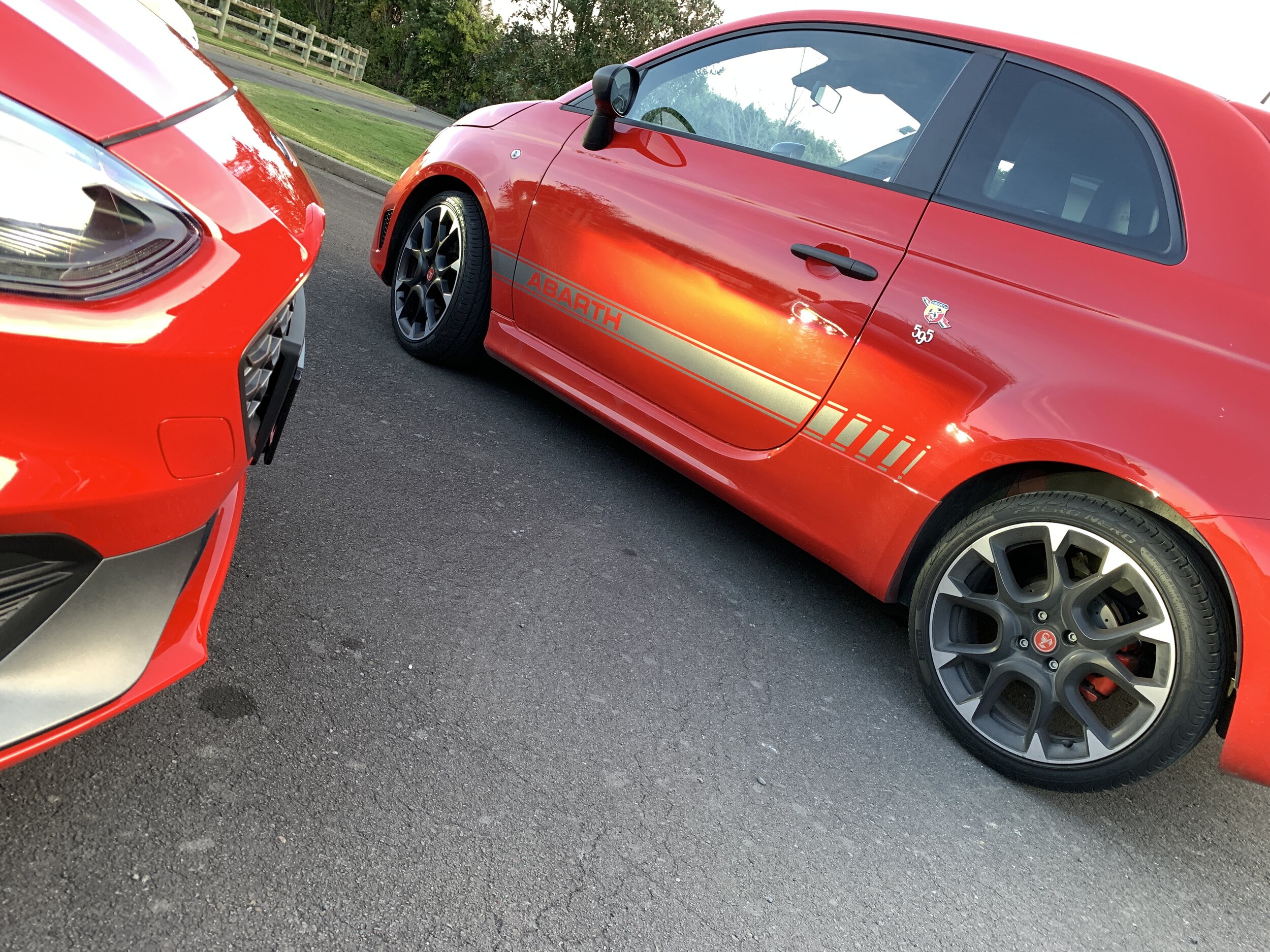
MERCEDES-AMG A 45 S
Base price: $111,000
Powertrain and economy: 2.0-litre turbo-petrol inline four-cylinder, 310kW/500Nm, 8-speed dual-clutch transmission, AWD, combined economy 8.9L/100km, CO2 204g/km.
Vital statistics: 4419mm long, 1796mm wide, 1440mm high, 2729mm wheelbase, luggage capacity 355 litres, 19-inch alloy wheels.
For: Exquisite engineering, astounding engine, surprisingly flexible.
Against: So pricey, can we have the gear stick back?
WHEN the A45 first launched it was packing 265kW and, once the Audi RS3 achieved a touch more, AMG pumped it up to a class-leading 280kW, enhancing the torque by 25Nm to 475Nm for good measure. And that was enough to reinstate as the world’s most powerful 2.0-litre hot hatch, never to be troubled since.
Now there’s this while new generation. Which conceivably could have kept all the good bits of before and still been class king. Except, of course, it hasn’t. AMG was probably bothered, for one, that the old car was just 0.1 seconds faster to 100kmh from a standing start than the Ingolstadt worrier. Also, this is a brand whose credo is based on continual improvement.
Accordingly, with transference to a new platform, they’ve gone and redone all the performance hardware. Comprehensively. Power climbs to 310kW, torque to 500Nm, 0-100kmh falls to 3.9 seconds and … well, life with this wee smasher becomes even more of a blaring blur.
Well, that’s how it looks. In reality, there’s potentially a point where fast is fast, and faster doesn’t really feel it. I’d imagine that were all editions to be brought together, I guess you would have little trouble rating their respective blast values and picking the one that has, on the hot hatch scale, just gone into the equivalent of a thermonuclear zone.
But among A45 constants is that it has always been so much about the thrusting rush. Every predecessor has offered what this one delivers so easily; the kind of heart-jolting accelerative excitement that normally only associates with roller coasters when they free-fall off the ride’s highest point.
So it keeps doing that. Just as it keeps on setting the mark for being a car that seems almost over-qualified for the job it undertakes.
As a rule of thumb, you can generally take it for granted that any carmaker, when heating up any family car – which this still is, being an A-Class by birthright – will approach the process with some extra consideration and enthusiasm. But the AMG is more than that; the processes that involve here are astounding exacting, perhaps not to the point of overkill, but certainly to a level where the word ‘perfection’ seems to translate as ‘borderline acceptable’.
Assuredly, some owners will wonder why it needs as many performance functions or even why it so patently factors in performance abilities that, let’s agree, are well beyond reach in our driving environment, even on some racing circuits, and perhaps even the average level of engagement.
Fair point? Well, maybe, though I think the colleague who reckons it has somehow become so good as to be sanitised is missing the point.
For sure, it is a car that enforces you’d have to be driving like an utter loon – and then some - to reach beyond the point where it cannot cope. There’s a massive zone in which it will behave at a level that is as intoxicating as it is incredible, to the point where it will make you question all you thought you knew about physics.
And yet as much as it does all that, it also gives greater acknowledgement to the probability that some drivers haven’t the skill level to meet its capabilities, and accordingly gives them a better chance when they mess up. Yet on the other hand it also plays to expectations of those who do have the talent.
You imagine it already very devilish in the daily drive modes, which reach to Sport, but turn the dial further into Race and it assuredly so much more evil evidences that you realise PDQ that with this car, there’s extreme and there’s EXTREME.
The throttle sharpness is so much greater, every bit of the grunt is availed, it revs more readily to 6750rpm, which is where peak power occurs, and anything beyond light throttle translates into extremely quick forward motion. The latency is obvious when pegged at a standstill as the car positively quivers.
The exhaust note, too, finally releases the pop-bang, so reminiscent of Group A rally cars of old, that used to avail so easily in the first-gen car. Enforcing the seriousness here are the bonus facilities of launch control and drift modes; each open on presumption you already have a handle on the basics of their technique. Chucking an all-wheel-drive car into a slide is still a tricky business.
As always, it isn’t shy in announcing the insanity. The test car’s special yellow paintwork, which is all part of the Edition 1 treatment, is barely necessary, because so much more about the car’s appearance draws attention anyway.
Those 90mm diameter quad exhaust pipes sitting either side of a diffuser marked out by two vertical twin fins, there to help to suck the rear of the car down – also the job of the big angled spoiler on the top of the boot lid and the dive planes jutting out of the DTM-ready front spoiler - the huge 360mm cross-drilled front discs and accompanying six-piston callipers sitting all too obviously behind the fat tyre-shod 19-inch alloys, plus all the performance shop stuff inside – in this case, including heavily-bolstered front chairs that are a no-cost option to wider, more roadcar-style types, plus the requisite flat-bottomed and flat-sided steering wheel in Alcantara and complete with yellow twelve o'clock marker on the top … all lend very obvious clues to it being intended for rather more than a shopping run.
Those used to the old cars will find easily acquaintance with the new, save that they’ll search in vain for the stubby central gearshifter.
Notwithstanding that the new approach - shifting, when things get busy, by way of the now larger, alloy paddle, one on each side of the steering column, and then fine-tuning adjustment with chubby multifunction switchgear on the wheel hub – presents a more appropriate tie-in with Mercedes’ F1 involvements, and definitely delivers good result from the new AMG Speedshift eight-speed dual-clutch auto, I do miss the shifter, if only because it looks far more ‘pro’ than what we get now: The Mercedes’ 101 of a plastic column wand to engage Drive, Reverse, Park and Neutral.
The dials you’ll play with most are the shortcuts that can be set up for the damper settings and active exhaust, or something else should you prefer and another that lets you toggle through the different drive modes. Elsewhere, the broad double display setup of the MBUX infotainment system stretches across the top of the shallow dashboard and it’ll also impart loads of performance-specific info, in addition to undertaking all the everyday functions dedicated to infotainment and the like.
The active and fully variable 4Matic Plus all-wheel-drive transmission with its AMG Torque Control is a thing of beauty. Power is distributed between the front and rear axles, with torque vectoring by brake on the front axle and a more advanced twin multi-disc clutch setup on the rear. These electronically controlled clutches offer total variability in power distribution across the rear axle.
So it’s good to go. And go, and go. And though it can accommodate drivers who are compelled to keep it in Comfort mode and tootle within the posted limits, to the point of offering a reasonably cosseting ride and even some decent degree of comfort – notwithstanding those sports seats are probably only good for a couple of hours – it’s really designed to drive. Hard.
The most rewarding section of a two-hour final run was the quite country road section that was done and dusted in 20 minutes. On that piece, the reward was intense: The car was all but telepathic.
It’s really hard to see how the A45 could be improved. Except, of course, they’ve already managed to do just that three times already. So, undoubtedly, it will be.
Shame the price has to be so stratospherically high, though the one consolation is that A45s are among those AMGs that seem to hold remarkably good residual value. Surely that’s as much a nod of acknowledgement to their special qualities as anything else?
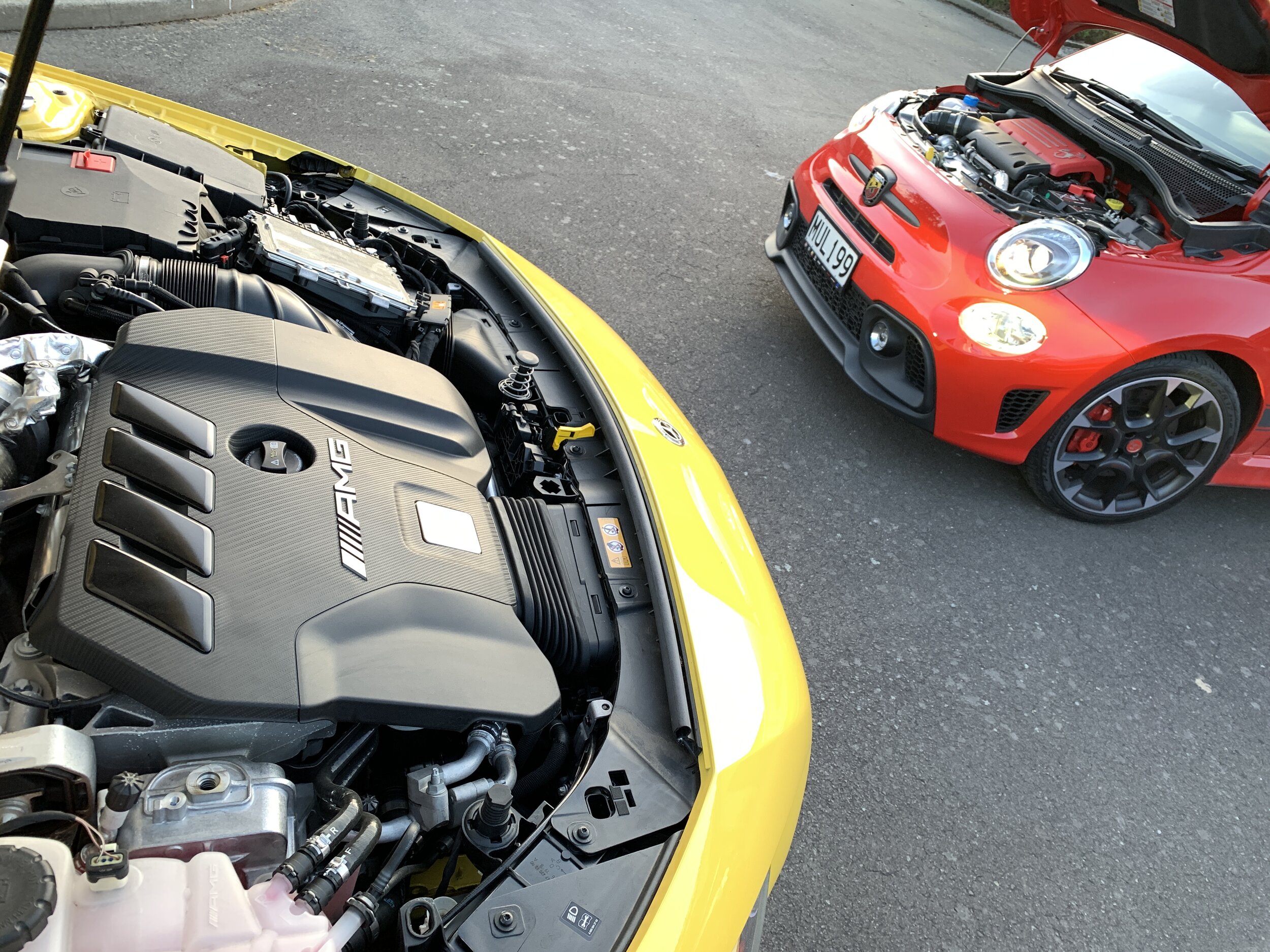
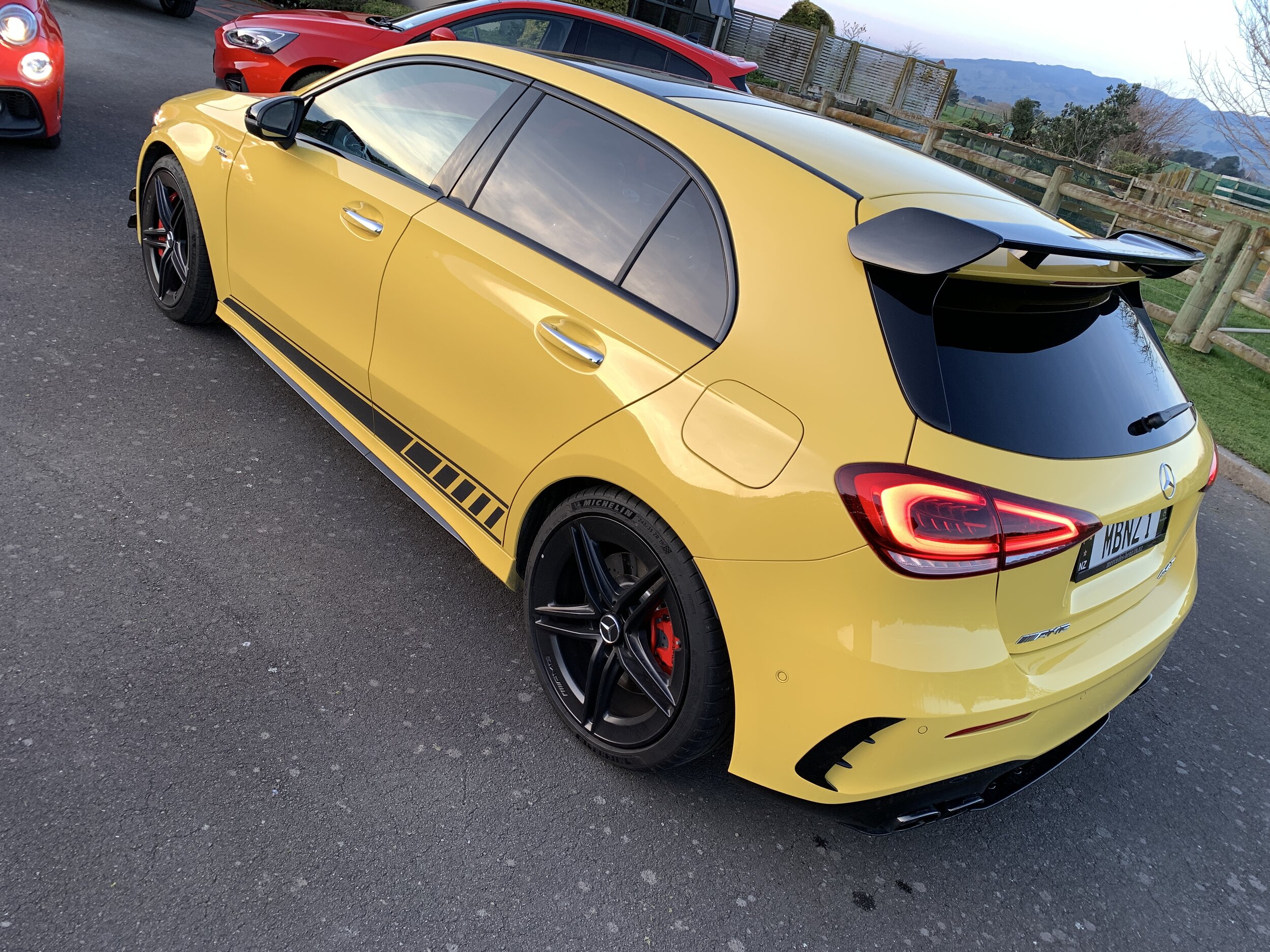

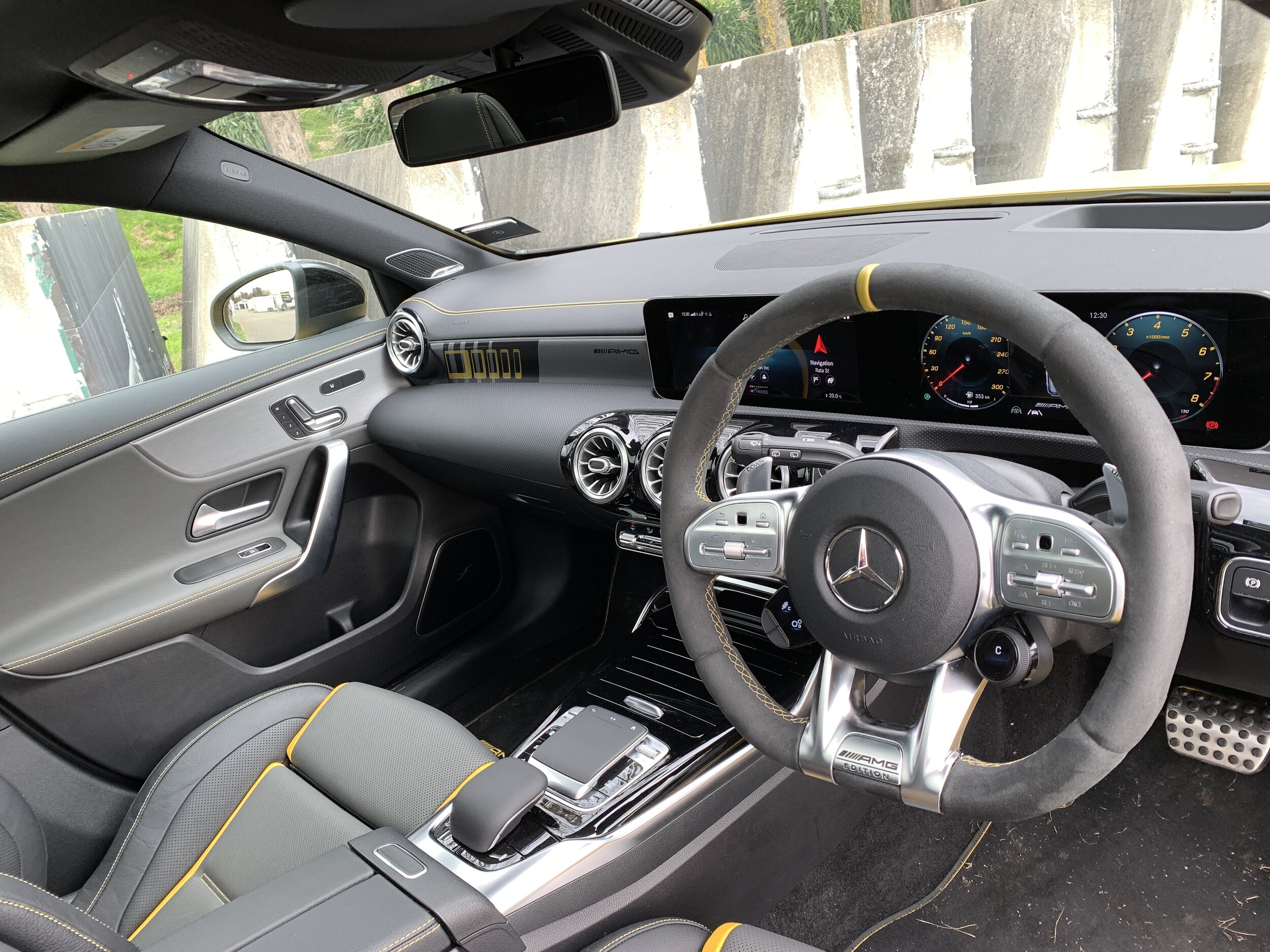
Ford Focus ST
Base price: $59,490
Powertrain and performance: 2.3-litre four-cylinder DOHC 16-valve turbocharged petrol engine. 206kW/5500rpm, 420Nm/3000-4000rpm. Front-wheel drive. Fuel consumption 8.6L/100km.
Vital statistics: Length 4388mm, height 1492mm, width 1825mm, wheelbase 2700mm. Luggage 273 litres. Wheels: 19-inch alloys with 235/35 ZR19 Michelin Pilot Sport 4S tyres.
For: Best Focus ST yet.
We don’t like: A manual option wouldn’t hurt, cheap interior plastics, RS fans need look elsewhere.
NEW Zealand’s association with fast Focuses (or should it be Focii? You decide) has been a wild ride through history.
Beginning with the 127kW/196Nm 2.0-litre four-cylinder ST170 of 2003, the adventure really fired up with the thrilling and hugely characterful 2.5-litre 166kW/320Nm five-cylinder XR5 Turbo. Everything became all the more exciting after that when Ford doubled the mix; keeping a front-drive firework but also offering a more honed higher-tier model that, by adding in the ingredients of four-wheel-drive, tricky differentials and even more explosive power – initially in a five-pot format that performed sensationally and sounded superb - and then as a four-pot that kept everything on the boil, even that amazingly evocative burble, really shook things up.
And now it’s … different, with all bets hinging on the lesser of the two formulas.
Which makes things interesting, when you consider that two letters have always explained not just why the ST has previously been sporty to a certain point, but still is.
Ford ditching the RS was a late action. One that occurred well after the ST now acting in its stead had gone into production. You’d have to think that, had the determination to axe the previous flagship occurred before ST had been signed off, the latter might have been made even more sharp-edged than it is. But that’s not how it played out.
So the point is? Well, just this. Don’t hung up about how well this car compares to the RS. It was never designed to be an alternate so doesn’t deserve consideration as a stand-in now. How can it?
The only Focus it needs to be compared with is the previous ST and that’s an exercise in which the outcomes are pretty much entirely positive – it’s a major step forward.
Obviously, there’s significantly more fizz, though in spending time with it you quickly realise that’s not the only pull. Also adding to the value is the shift in transmission choice – yes, it’s a shame it no longer has three pedals, but an automated manual now is crucial for ongoing (and elevated) success. The car’s on a much better platform, the latest styling is more attractive and the ST equipment level is finally properly sorted. That previous ST was too ‘lite’ for comfort features and driver assists.
Simply, what we get now is something that feels less a product of marketing hype than engineering can-do. Even though it retains rather more of the basic bits that go into a standard Focus than the RS ever would, it uses those shared parts well. And all the special extras are … well, more special.
For instance, while the suspension components are basically the same, it takes adaptive dampers, which stiffen and soften according to which buttons you've pressed. There’s an electronically controlled differential, which uses hydraulically operated clutches - and a myriad of sensors and inputs - to shunt as much as 100 percent of the engine's power to the wheel that can handle it best. And to help keep it on the boil, the engine gets an anti-lag system, distantly related to that used by Ford's rally cars, which keeps the turbo spinning even when you've lifted off the throttle.
While the body kit isn’t overly rakish, it takes Recaro front bucket seats – which, for the first time ever in a performance Focus, are properly low-seat - and the grey-finished alloy wheels are treated to the same, very grippy Michelin Sport Pilot tyres Benz puts onto the A45.
If you have to pick immediate allures, that’s easy. One is that engine, the other is the chassis.
It’s not just that it has 22kW more and another 60Nm; the more crucial element is that the new outputs are a lot more honest. The old car’s oomph unrolled in in intriguing fashion; it was an engine that felt faster than it potentially was, as evidenced by a claimed 0-100kmh sprint time that put it in the dust raised by the Golf GTi, the RenaultSport Megane and Subaru’s WRX manual back in the day.
The new is far less likely to feel the sting of sand in its face. An increased displacement is handy, but really this engine shines because it is of better pedigree, being basically the Mustang's 2.3-litre, turned sideways, and detuned just a little. Its maximum power output is more than you'd get in all but the most expensive versions of the Golf GTI, the same as from that Megane RS and a just a little bit less than a Honda Civic Type R. The big torque and that clever anti-lag system ensure it's sure not slow, that 5.7-second 0-100kmh time confirms it, though really it’s the wide slug of oomph that really seals the deal. This is an engine that feels robustly muscular all through its rev range. It also sounds good, almost like the old five-cylinder engine, with some nice pops and crackles on the overrun.
Such a gold medal effort for a car that previously struggled to find a podium place holder deserves the silver lining of a terrific transmission. Which the new seven-speed is … in the main.
A six-speed manual alternate still exists – in other markets. Ford NZ has chosen not to bother, in belief the volume sales potential rests with the auto, so it wants to concentrate on a single variant.
Logic suggests that’s going with the flow – for instance, almost all hot Golf buyers prefer direct shift and the Renault Sport Megane’s status has lifted by going this way. Ford’s box delivers pretty good shift quality. It’s as snappy as you’d want into the Sport and Track settings, smoother in the Normal you’ll revert back to for everyday driving.
However, there are irks. For one, as Colin Smith pinpointed in his own test, the gearing is slightly out of step with Kiwi speed limits; an irksome indecisiveness between sixth and seven incurs around 100km. Also, the rotary dial gear selector is a bit budget - as indeed are too many plastics within the cabin – and a bit underwhelming for a performance model while the steering wheel buttons that initiate the sports functions could be more logical – why two, separated by a third that has nothing to do with going faster? The one closest to the wheel boss allows a primary access whereas the other opens into a sub-menu for the fully fun stuff that very much widen the car’s character. Track – which comes with the usual ‘circuit only’ nonsense advisory – very much amps up the engine note accompaniment and delivers pronounced throttle blipping down shifts.
There’s some steering tug when you floor it, but with an electronically controlled limited slip differential assisting with power application, it’s nothing like the wrist-stretching torque steer that used to affect old-school types. The ST also achieves sharper steering than the regular Focus, too, so there’s less swivel.
Another high-end aid that delivers positively is the Continuously Controlled Damping, which monitors suspension, steering and braking inputs at 2 milli-second frequency to adjust damping responses. It’s a very responsive and clever system.
Ford has good history insofar as chassis development goes and the ST doesn’t let the side down. It’d be intriguing to put this model up against the ST Fiesta to judge which was the more athletic; potentially the smaller car has a touch more deftness, but it’d be close.
The Focus definitely has an ace card with the multi-link rear suspension it gains in place of the torsion beam axle used in mainstream Focus hatches; that it rides closer to the tarmac than the standard car also is a positive.
Basically, it has an exciting stick-like-glue feel, is hugely confident attacking corners and is rarely significantly rattled by ruts and bumps. How could it be improved? Well, there is a way … but it involves provisioning the enhanced traction that is delivered to the AMG 45. An all-wheel-drive ST would be a heck of a thing, but it’d also be a lot closer to being the kind of Focus Ford says it no longer wants to build.
All the same, it’s this greater … ahem .. focus on hardcore dynamism that really makes this ST more impressive to drive than any before it. A touch more effort on cabin quality and perhaps a bit of a rethink about how to improve the gearbox’s actions and involvements and this direct, agile and purposeful model would be the best thing out there in the sub-$60k sector.
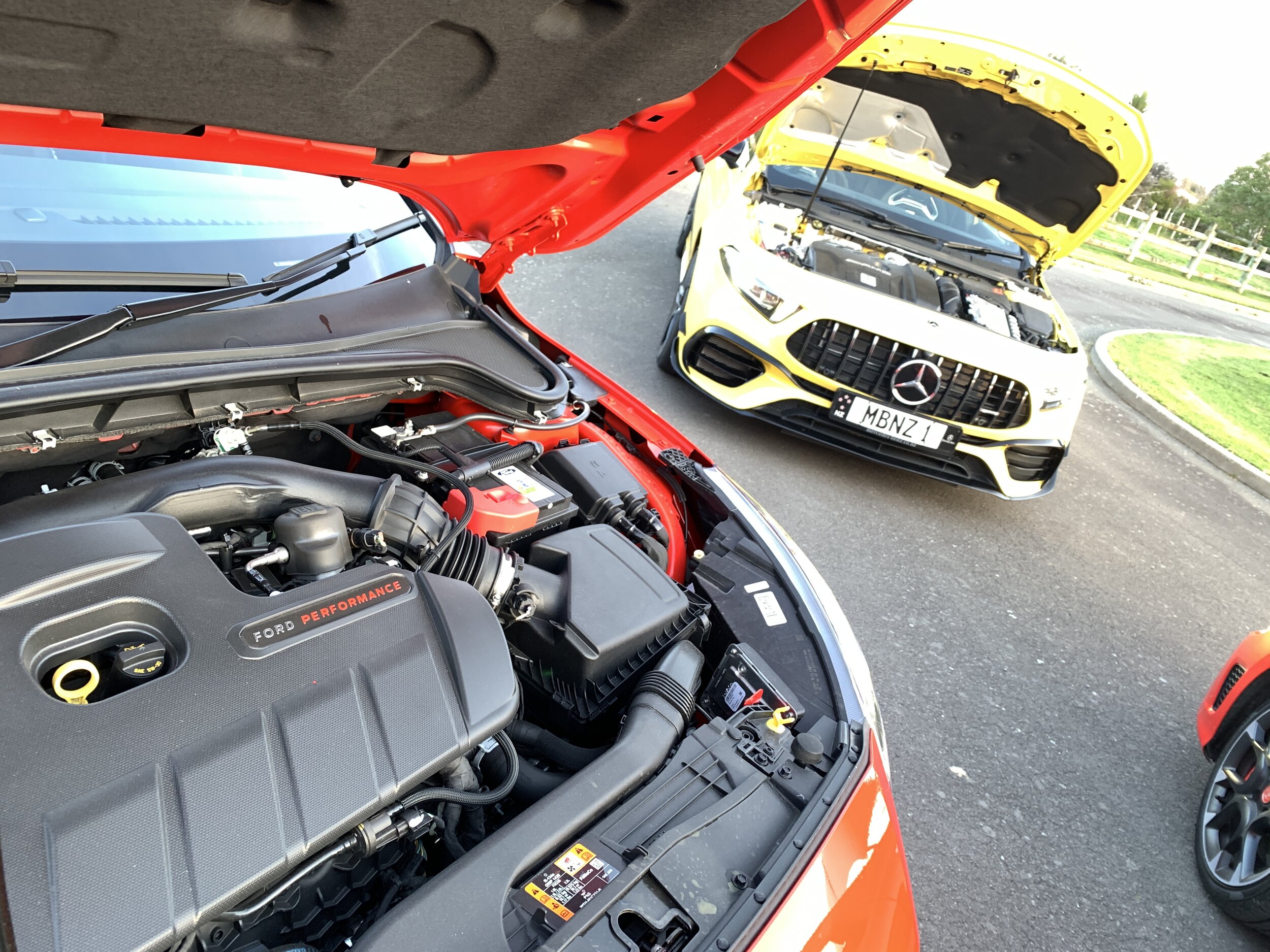
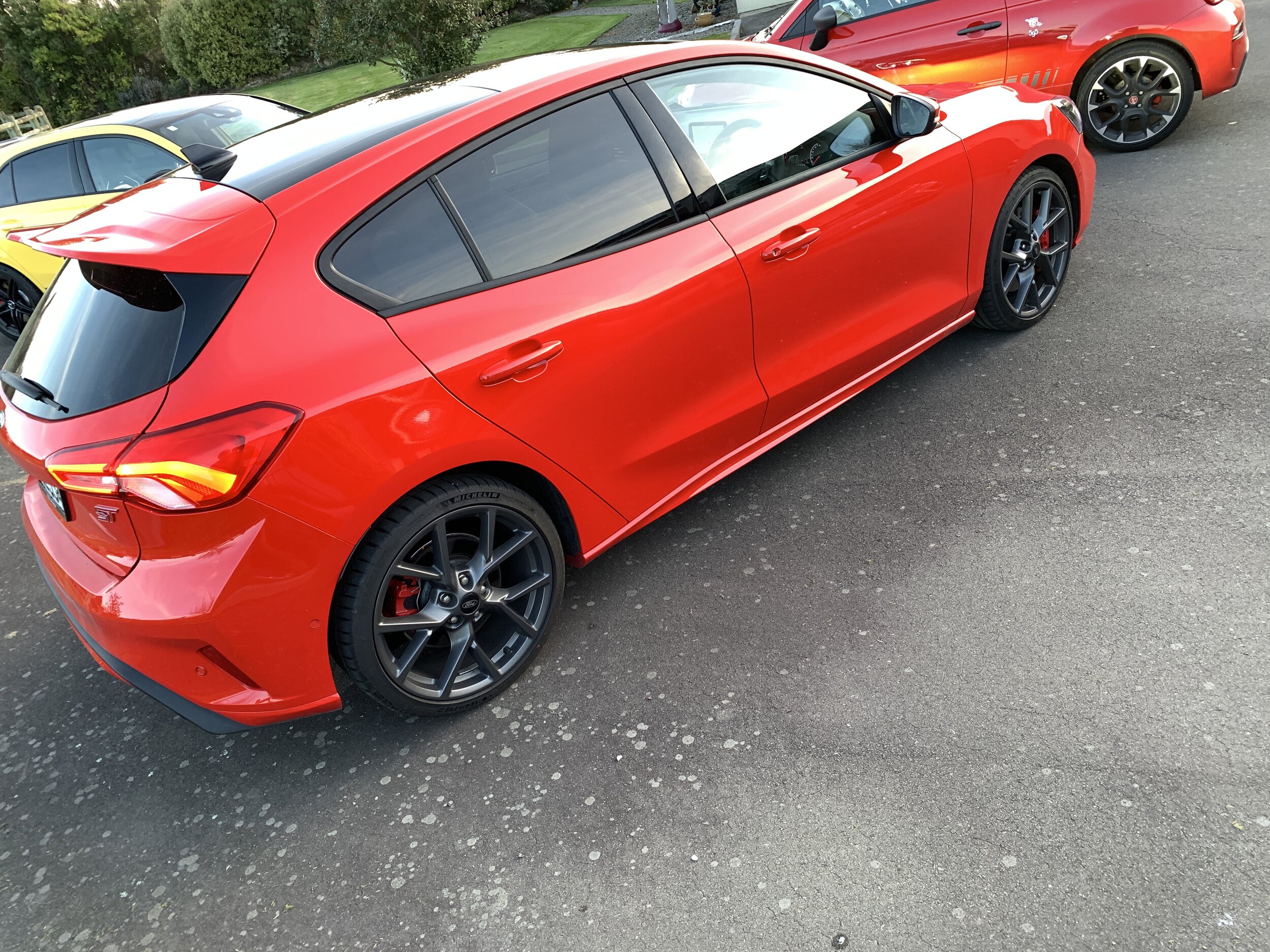
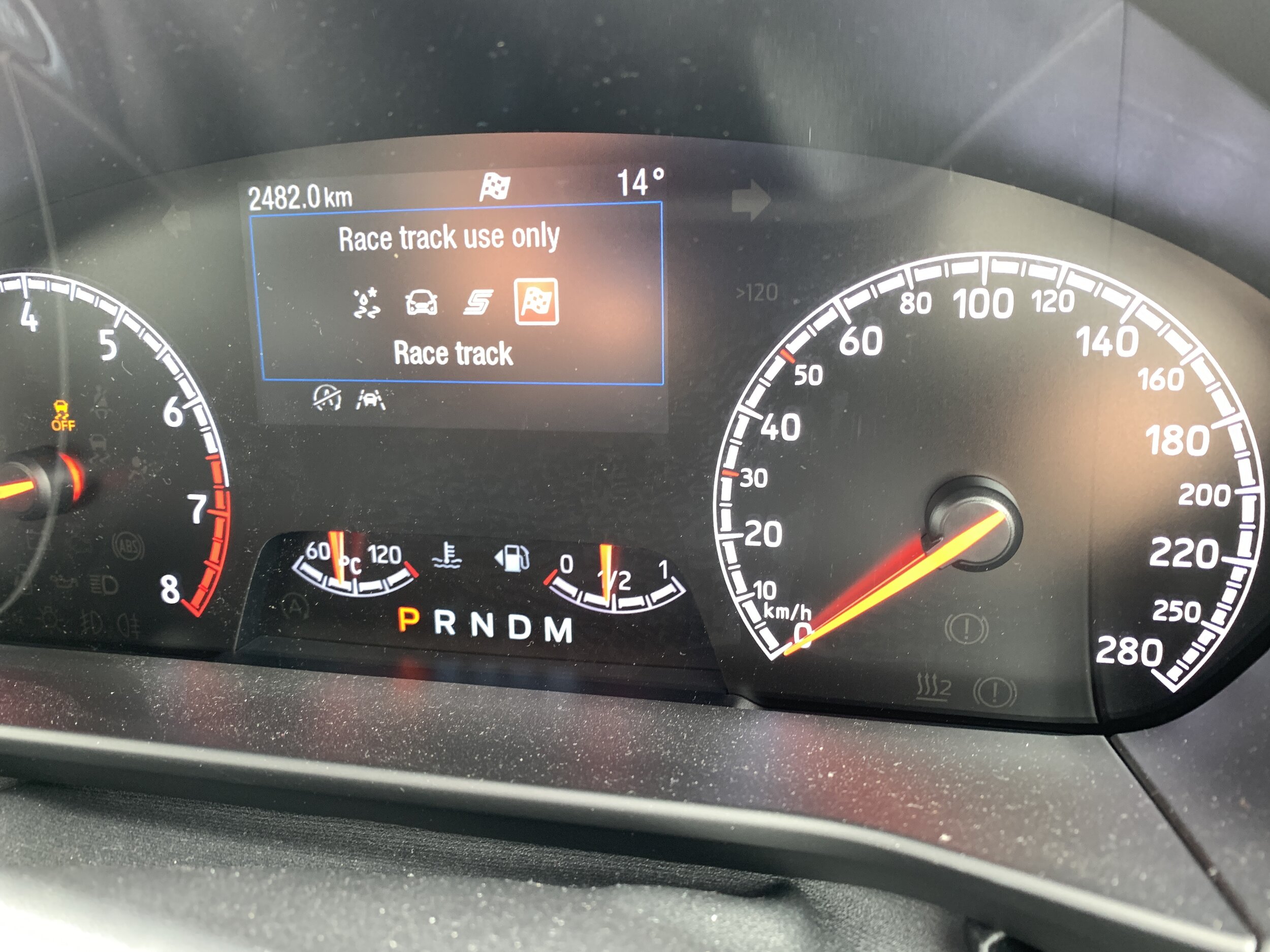
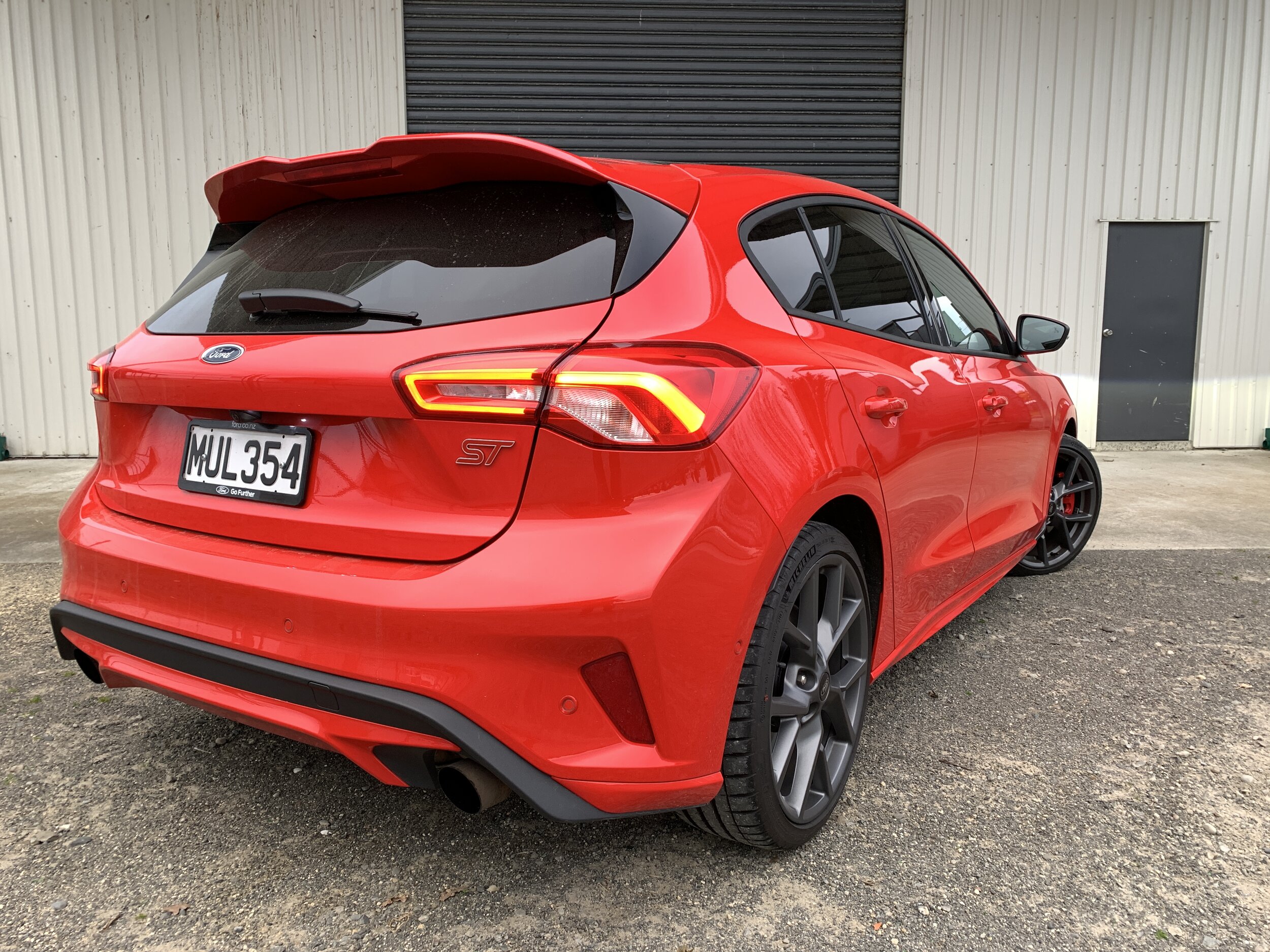
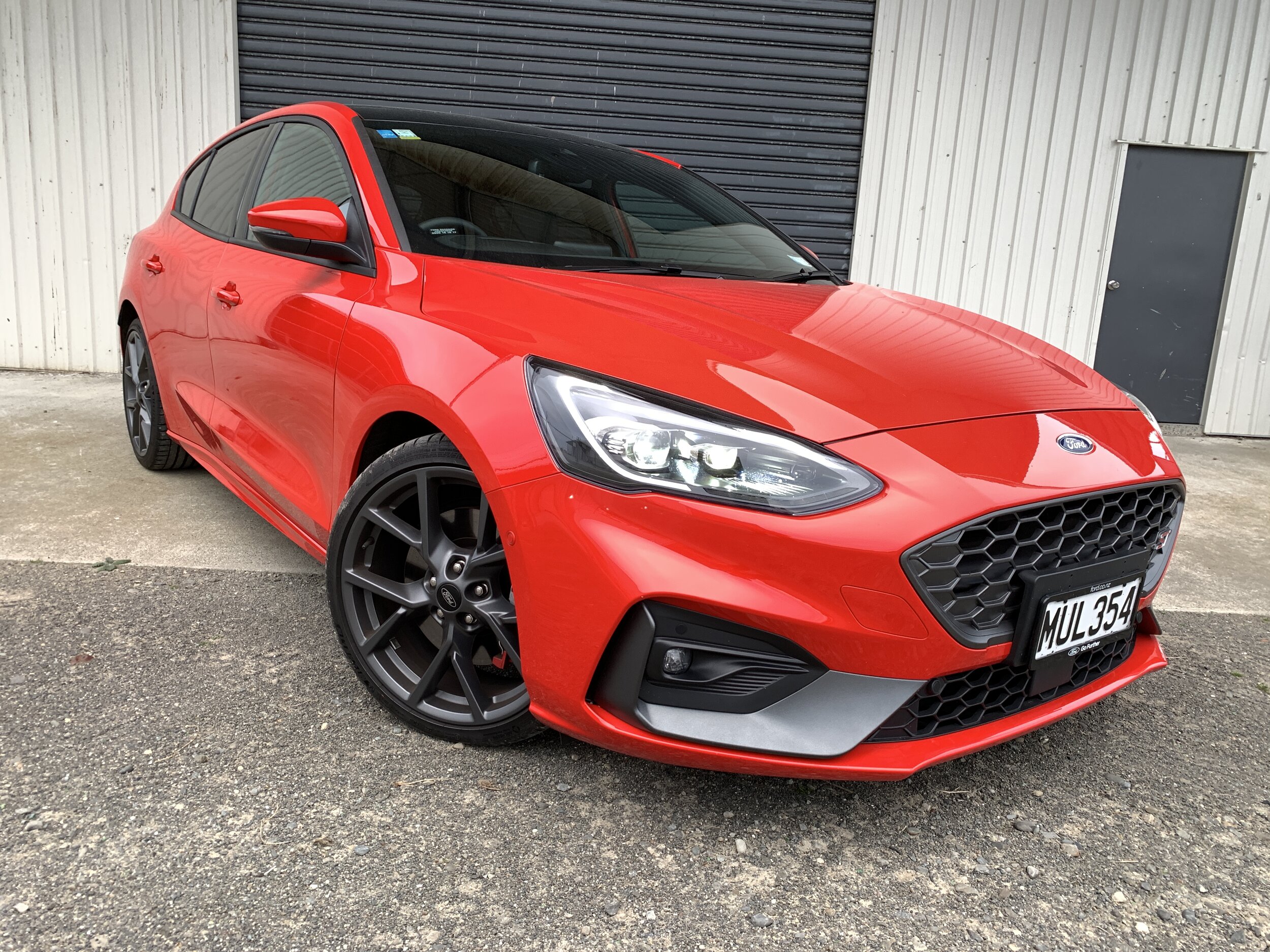
HYUNDAI VELOSTER 1.6T LIMITED
Base price: $52,990
Powertrain and economy: 1.6-litre four-cylinder turbo-petrol, 150kW/265Nm, 7-speed dual clutch transmission, FWD, combined economy 7.1 L/100km, CO2 163g/km.
Vital statistics: 4240mm long, 1800mm wide, 1409mm high, 2650mm wheelbase, luggage capacity 303 litres, 18-inch alloy wheels.
For: Second generation car is so much better sorted than its predecessor.
Against: Too closely priced to the massively harder-edged i30 N and who needs this weirdo design?
THIS was, quite literally, the car in the background.
If not for a change in testing date, the Hyundai would not have been on the scene. And, truth be told, it wasn’t expected to be part of the scene when it did turn up. The intent was to leave it parked up and totally out of the picture until the ‘fast’ stuff story had been signed off.
Except that proved impossible. During those days there were occasions when the Veloster had to be driven. And, every time it was, it took opportunity to strive to impress that it, too, had a right to be considered picked for play. So should it?
Well … maybe. In truth, there are hurdles beyond the first and most obvious one; which is that asymmetric body styling. It’s not for me.
Frankly, I never warmed to with the first generation of this car and still see no point to with the second. Mostly, it’s because I’m just a person who enjoys the neatness of symmetry; so the Veloster’s ‘two doors on one side, one on the other’ approach straight away irks on that level.
But it also fails to convince because it lends no particular benefit in respect to practicality. If anything having front doors this long simply makes it awkward when you’re parking, because in angle slots especially you are always aware of the requirement for additional space in which to swing them, else it’s hard to get in or out. Beyond that, it just looks weird. So, yes, as much as I acknowledge that it’s always good to have a USP, basically any standout ingredient only becomes a plus when it has a purpose. And this doesn’t.
Anyway, putting all that aside – impossible, I know, but let’s try – the Veloster will have to convince that it’s basically as good as the established Hyundai hot hatch that is very good indeed; the i30 N.
Surprised it comes closer to the car the South Korean mega-brand hired former BMW M Division engineering supremo Albert Biermann to help make, and then poured huge R&D resources behind? Yeah, me too.
The Veloster in previous form has never been anything like that sporty. And, truth be told, it still isn’t feral enough to take on the N product in a straight-up fight, because outright performance still isn’t on par. And yet it does at least feel a lot sportier now than it previously did. Transference to a more competent chassis (the same platform as the i30, which brings a new multi-link rear suspension) seems to have inspired the development team, but perhaps they also began to spend time with Biermann’s group as well.
Whatever has happened, the Veloster has a lot more fighting spirit than previously. It has a nicely snappy version of the direct shift transmission – which, of course, the N has yet to get and very much needs – achieves much better suspension tuning than before, is given some decent brakes, is treated to good tyres (no points for guessing these being Michelin Pilots) and even has better seats. All of which makes it much more memorable.
Even that the colour range now includes the shade seen here, a dull metallic grey finish that seems identical to the hue that was once a very expensive option on very high-end performance cars (Ferraris and AMGs especially) and was so special care it couldn’t be hand-washed with anything other than an expensive solution … well, it adds to Hyundai taking this car in a route that was previously too hard. What’s always been a sports car by definition has, at least become sporty.
Mind you, that’s possibly just the version on test. An entry level model with Hyundai's 2.0-litre four-cylinder petrol engine is available, but you know it’s highly unlikely to be as sharp or as involving as the flagship Turbo Limited.
This one is powered by a 1.6-litre turbo petrol four-cylinder. It’s the same size engine that does the i30 N such good and, though not as highly tuned here – with 52kW less at optimum - assuredly it has decent verve, particularly when you tap into the turbo over-boost though kick-off enthusiasm is reasonably good, too. It even manages a snarly exhaust note from time to time.
It’s in marriage to a seven-speed dual clutch transmission whose character is in theme with the engine’s improved nature. Sure, it demands a moment to sort itself when transferring from forward to rearward motion – but, then, all transmissions of this type tend to ask for this. But if you’re pressing on and expecting swift, accomplished up and down changes, it’s really in the mood.
The car’s ride is the most cosseting in this group, no arguing about that. Yet grip is good and the car now has a far more positive attitude, at least with just a driver aboard, than it previously demonstrated. The nose-led attitude has been vanquished for a sharp, responsive turn-in. The torque vectoring control system doubtless helps keep it tidy, but it doesn’t seem too intrusive.
It’s all good, if only to a point. Frankly, this is still the car that will struggle to keep the others in its sight; there’s not quite enough wick, for a start. But does deserve kudos for a demonstrating more tenacity than it appears capable of.
If more madcap, it still stays sensible on safety grounds. In typical Hyundai fashion the car is loaded with assists. The SmartSense suite now standard on every Veloster incorporates driver attention warning, forward collision warning, forward collision-avoidance assist, blind-spot collision warning, rear cross-traffic collision warning, adaptive cruise control, high beam assist and lane keeping assist systems. Some can be a little over-zealous, but it’s all for a good cause.
The second-gen cabin has a more affluent feel now and of course it has a large touchscreen with provision for Apple CarPlay and Android Auto, plus a heap on in-house developed functions. There’s wireless phone charging, too; on a decent-sized pad to boot. Heated and ventilated front seats, a head-up display, a full-width glass sunroof and an 8-speaker Infinity premium audio system are provisioned, plus the kind of leather that never convinces as being from a bovine.
So, all in all, it’s an intriguing car, albeit not one that ultimate sells itself easily. It’s become bigger, which helps free up more interior room – though not to the point of making it four adult friendly - and while the design proper doesn’t work for me, I’d have to agree the shape has become more attractive, particularly in silhouette.
Realistically, if any Veloster has a chance of getting into your life, it’s this one. But it’s probably only an outside chance. Especially with the family opus i30 N costing just $2000 more. Still, it was interesting and if you’re an absolute fan of ‘out of the ordinary’ …. well, it’s certainly that.
